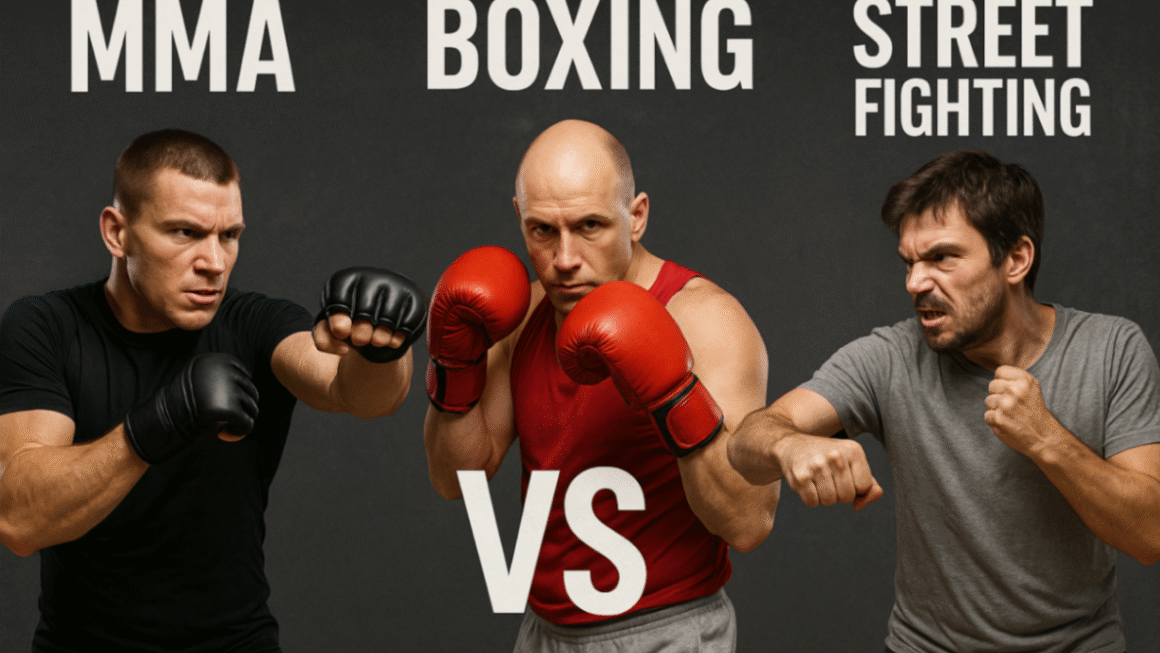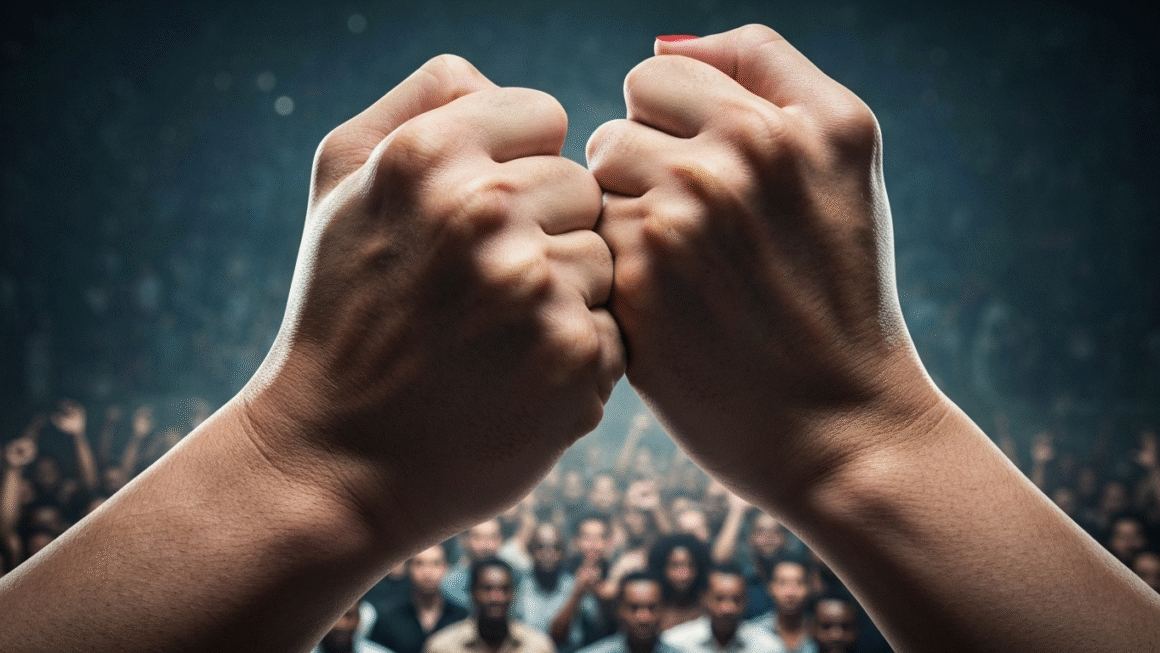Key Highlights
- The popularity of street fighting and underground fights has surged due to widespread sharing on social media. Figures like Kimbo Slice became famous through viral videos, paving the way for today’s online fight culture. While many backyard brawls showcased online may appear to frequently end up on the ground, not all such fights do—it’s a myth that every street or underground fight automatically leads to grappling or ground action. The outcomes actually depend on the fighters’ styles and tactics, with some bouts remaining primarily stand-up exchanges.
- Figures like Kimbo Slice became famous through viral videos, paving the way for today’s online fight culture.
- Backyard brawls differ significantly from professional mixed martial arts (MMA) or boxing, often lacking rules, safety measures, and official oversight.
- These unsanctioned fights exist in a legal gray area, with participants facing potential criminal charges.
- Fighters are motivated by a range of factors, from resolving disputes to seeking a sense of community and adrenaline.
- YouTube channels dedicated to these fights gather hundreds of millions of views, far surpassing the reach of traditional martial arts dojos.
Introduction
The raw, unfiltered world of street fighting has moved from shadowy alleys to the bright glare of your screen. Videos of underground fights are not just a niche interest anymore; they have become a major phenomenon on social media. This surge in popularity raises questions about the line between amateur martial arts and dangerous brawls. What is driving this trend? As we explore the culture of backyard boxing and unsanctioned combat, we see a complex world driven by adrenaline, community, and the power of viral content.
The Rise of Backyard Brawls in America

Backyard brawls have carved out a unique space in American fight culture. These are not the polished events you see in professional mixed martial arts; they are raw, unsanctioned contests often held in residential yards. Their popularity has exploded largely because of social media, which provides a platform for these underground fights to reach a global audience.
This visibility has turned local disputes and amateur showcases into viral entertainment. Understanding this trend requires a closer look at what defines these brawls and the figures who brought them into the mainstream.
Defining Backyard Brawls: Origins and Cultural Roots
At their core, backyard brawls are a modern form of street fighting—hand-to-hand combat in an informal setting. Historically, fighting was a means of survival, used for protecting territory, resources, and family. Evidence of human conflict dates back hundreds of thousands of years, suggesting that combat is deeply ingrained in our history.
Today’s backyard brawls echo these primal roots. While the stakes may seem different, the underlying motivations often remain the same. As one lecturer in war studies, Mike Martin, states, “Humans fight to achieve status and belonging.” These events provide an outlet for settling interpersonal conflicts, whether they stem from personal “beef,” a desire for reputation, or simply a need to prove oneself.
The rise of the internet gave this age-old practice a new, digital arena. What was once a local affair could now be broadcast to millions, transforming backyard brawls from isolated incidents into a shareable, and often monetizable, cultural phenomenon.
Kimbo Slice and the Underground Fight Movement
No single person did more to popularize the underground fight movement than Kimbo Slice. Before he was a professional in mixed martial arts, Kevin “Kimbo Slice” Ferguson gained worldwide fame by participating in and dominating unsanctioned street fights in Florida. These brawls were recorded and uploaded to the internet, quickly going viral in the early days of video-sharing platforms.
His first taped fight showed him leaving a large cut on his opponent’s eye, earning him the nickname “Slice.” This raw footage captivated millions and demonstrated the power of social media to create a star outside of traditional channels. Kimbo’s intimidating presence and knockout power made him an internet legend.
He effectively served as the bridge between the backyards of Miami and the mainstream consciousness. His journey from viral street fighter to a professional competitor in organizations like the UFC inspired a new generation of fighters and proved that there was a massive audience for raw, unsanctioned combat.
Comparing Backyard Brawls to Organized Street Fights
Not all unsanctioned fights are the same. A spontaneous backyard brawl is very different from a more organized, yet still illegal, street fighting event. Some groups host events with makeshift rings, referees, and a loose set of rules, creating a spectacle that borrows elements from bare knuckle boxing and formal martial arts.
These organized events aim to provide a “controlled environment” to settle disputes, distinguishing themselves from chaotic street fighting. The following sections will explore the specific rules that govern these bouts and how they compare to both raw brawls and professional combat sports.
Rules, Regulations, and Event Structure
The structure of backyard brawls can vary dramatically. At one end of the spectrum are chaotic fights with no rules. At the other are organized groups like Street Beefs, which aim to prevent serious injury by providing a framework. These events often feature rounds, a referee, and the use of boxing gloves.
However, even in these more structured settings, the regulations are a far cry from professional mixed martial arts. There are typically no medical personnel on-site, no pre-fight physicals, and no blood testing for infectious diseases. Fighters often just show up and compete, sometimes signing a waiver acknowledging the risks.
This lack of oversight is the key difference. While professional sports are governed by athletic commissions, these underground fights operate entirely outside of that system, creating a high-risk, high-reward environment for participants.
| Feature | Backyard Brawls / Organized Street Fights | Professional MMA (e.g., UFC) |
|---|---|---|
| Sanctioning Body | None | State Athletic Commissions |
| Medical Staff | Rarely present | Commission-designated doctors & ambulance required |
| Rules | Varies; often informal or self-policed | Unified Rules of Mixed Martial Arts |
| Protective Gear | Varies; may include gloves, often none | Standardized gloves, mouthguard, cup |
| Fighter Vetting | None; fighters just show up | Pre-fight physicals, blood tests, pro record |
Bare Knuckle Boxing vs. Raw Street Fights
While both can be brutal, bare knuckle boxing and raw street fights are not synonymous. Modern bare knuckle boxing, even in unsanctioned forms, typically retains some structure from traditional boxing. It often takes place in a ring or designated space and follows a set of rules, however minimal they may be.
A raw street fight, by contrast, is pure chaos. It can happen anywhere, at any time, and is completely unpredictable. There are no rounds, no referees, and no rules against certain moves. The fight often ends only when one person can no longer continue or outside intervention occurs.
Key differences include:
- Environment: Bare knuckle events usually have a designated ring or mat, while street fights happen in public, unpredictable spaces.
- Rules: Even informal bare knuckle fights might prohibit things like eye-gouging or biting, which are fair game in a true street fight.
- Intent: Organized bare knuckle fights are a sport, however brutal. Street fights are often the result of escalating personal disputes.
Legal Perspectives on Underground Fighting
Engaging in underground fights carries significant legal risks. From a legal standpoint, these events are typically illegal because they disrupt public order and operate outside the purview of state athletic commissions that regulate combat sports like the UFC. Participants can face serious criminal charges.
The specific laws and the intensity of enforcement can vary by location. What might be ignored as a minor disturbance in one jurisdiction could lead to felony charges in another, especially if serious injuries occur.
Laws Governing Unregulated Brawls in the U.S.
In the United States, participating in an unregulated brawl is almost always illegal. While laws vary by state, fighters can be charged with offenses ranging from disorderly conduct and disturbing the peace to assault and battery. If the fight is pre-arranged and involves a group that intimidates the public, participants could even face charges of affray.
The severity of the penalty often depends on the outcome of the fight. If someone is seriously injured, the charges can be elevated to aggravated assault. In the tragic event of a death, all participants involved in the assault could potentially face murder or manslaughter charges, regardless of who delivered the final blow.
Some organizations, like Street Beefs, attempt to navigate a legal gray area by not charging admission fees or paying fighters, thereby avoiding classification as a professional promotion that would require state licensing. However, this does not grant them immunity from criminal law if their activities are deemed a public nuisance or result in serious harm.
How Law Enforcement Responds to Viral Fight Videos
The response from law enforcement to viral fight videos is inconsistent and often depends on the context. In some cases, authorities may choose to ignore them. For example, Harrisonburg police have reportedly received only occasional noise complaints about the Street Beefs venue and have largely left the gatherings alone.
However, viral fame can be a double-edged sword. When a video clearly depicts a serious assault, or if a participant is recognized as being involved in other criminal activity, it can trigger a formal investigation. In one New Zealand event, a fighter spotted wearing an electronic monitoring bracelet in a video was promptly referred to the police.
Ultimately, posting fight videos on social media creates a public record of an illegal act. While it can bring fame and followers, it also provides potential evidence for prosecutors. This makes every viral clip a gamble for the organizers and participants involved.
Risks, Dangers, and Motivation for Participation
Why would anyone choose to step into a makeshift ring with no doctors, no rules, and no prize money? The decision to participate in underground street fighting is complex, balancing immense physical risk against powerful personal motivations. The dangers of serious injury are ever-present in an environment with virtually no safety protocols.
Despite these risks, fighters are drawn to the underground scene for reasons that go far beyond a simple desire for violence. Understanding their motivations reveals a deep-seated need for respect, community, and a way to channel aggression into something they view as a sport.
Injury Statistics and Safety Concerns
The health risks associated with backyard brawls are severe. Without proper medical supervision or safety gear, fighters are exposed to a high likelihood of both short-term and long-term injuries. Research on street fight injuries shows that the head and face are the most common targets, accounting for a staggering 83% of fractures.
Beyond broken bones, fighters risk permanent disability, brain trauma, and even death. The lack of regulation means there are no safeguards to protect the participants. One fighter at an organized backyard event even noted that the only major injury was to a competitor’s arm, highlighting how normalized significant harm has become.
Key safety concerns include:
- No Medical Staff: Unlike professional boxing or MMA, there is rarely a doctor or ambulance on standby to treat injuries.
- No Vetting: Fighters are not screened for infectious diseases like HIV or hepatitis, creating a risk of transmission through open wounds.
- Concussions: Without trained referees to stop fights or medical protocols, fighters are at an extreme risk for untreated concussions and long-term brain damage.
Fighters’ Motivations for Choosing the Underground Scene
The reasons fighters choose the underground scene are as varied as the fighters themselves. For many, it is a way to channel aggression and settle disputes in a controlled setting, away from the potentially lethal consequences of gun violence. Chris Wilmore, founder of Street Beefs, started his organization to give people a place to “solve it” where they “won’t severely hurt each other or go to jail.”
For others, it is about finding a community and a sense of belonging. “We’ve become more of like a big family, where if someone needs help, they can lean on us,” says one referee. This feeling of brotherhood, built on mutual respect for facing a shared challenge, is a powerful draw for individuals who may feel like outsiders in mainstream society.
Ultimately, the motivations are deeply personal:
- Adrenaline and Purpose: Many fighters describe feeling “alive” in the ring and gaining a sense of discipline and focus.
- An Outlet: It serves as a release for stress and anger that might otherwise manifest in more destructive ways.
- Aspirations: Some hope their viral videos will be a launchpad to a professional career in mixed martial arts.
Social Media’s Impact on the Popularity Surge

Social media has been the primary engine driving the explosion in popularity of street fighting. Platforms like YouTube and TikTok have transformed backyard brawls from localized, private events into a global spectator sport. A fight that once would have been witnessed by only a handful of people can now rack up millions of views overnight.
This digital exposure creates a feedback loop: viral videos generate interest, which encourages more people to participate and film their fights, leading to even more content. It has democratized fight fame, allowing anyone with a camera and a will to compete to find an audience.
Viral Fight Clips: Trends, View Counts, and Memorable Moments
The numbers behind viral fight clips are staggering. The Street Beefs YouTube channel, for example, has amassed over 142 million views, with its top video alone reaching 20 million. This demonstrates a massive appetite for raw, unsanctioned combat that rivals the viewership of some professional mixed martial arts promotions.
The most memorable moments in backyard brawl history are almost always tied to their viral spread. The rise of Kimbo Slice is the quintessential example; his grainy, hard-hitting videos became legendary and created the blueprint for future internet fight stars. Another fighter, Jorge Masvidal, also gained notoriety in the same Miami backyard scene before his UFC career.
The impact of social media is clear:
- Massive Reach: Channels dedicated to street fighting have hundreds of thousands of subscribers.
- Monetization: YouTube revenue has allowed some organizers, like the founder of Street Beefs, to run their fight clubs full-time.
- Creating Stars: Viral fame provides a direct path to recognition, bypassing traditional industry gatekeepers.
- Defining Moments: Fights become legendary not just for what happens in the ring, but for how many people watch and share them online.
Conclusion
The surge in popularity of backyard brawls and underground street fighting videos is a striking phenomenon in today’s digital landscape. With millions of videos available online, these clips garner staggering view counts, illustrating the intense public interest in these raw forms of combat. The thrill of unregulated fights combined with the cultural allure of figures like Kimbo Slice has created a unique niche that captivates audiences. However, it’s essential to acknowledge the associated risks and legal implications that come with such events. As you explore this captivating world of underground fighting, remember to consider both the excitement it brings and the potential dangers involved. Stay informed and engage responsibly with the content that piques your curiosity.
Frequently Asked Questions
Are underground street fights legal in the United States?
No, underground street fights are generally illegal in the U.S. They violate public order laws and lack the sanctioning required for combat sports like the UFC. Participants can be charged with crimes like assault, battery, or affray, especially if injuries occur.
What makes backyard brawl videos so popular online?
Their popularity stems from their raw, unfiltered, and unpredictable nature. Unlike polished professional boxing or mixed martial arts, these viral videos offer a glimpse into a forbidden world of real-life conflict, which social media algorithms then push to a massive global audience.
Do fighters use any protective gear during backyard brawls?
It varies. Some organized backyard brawls may require fighters to wear boxing gloves to reduce hand injuries and cuts. However, many raw street fights use no protective gear at all, which dramatically increases the risk of serious harm for the participants involved.




